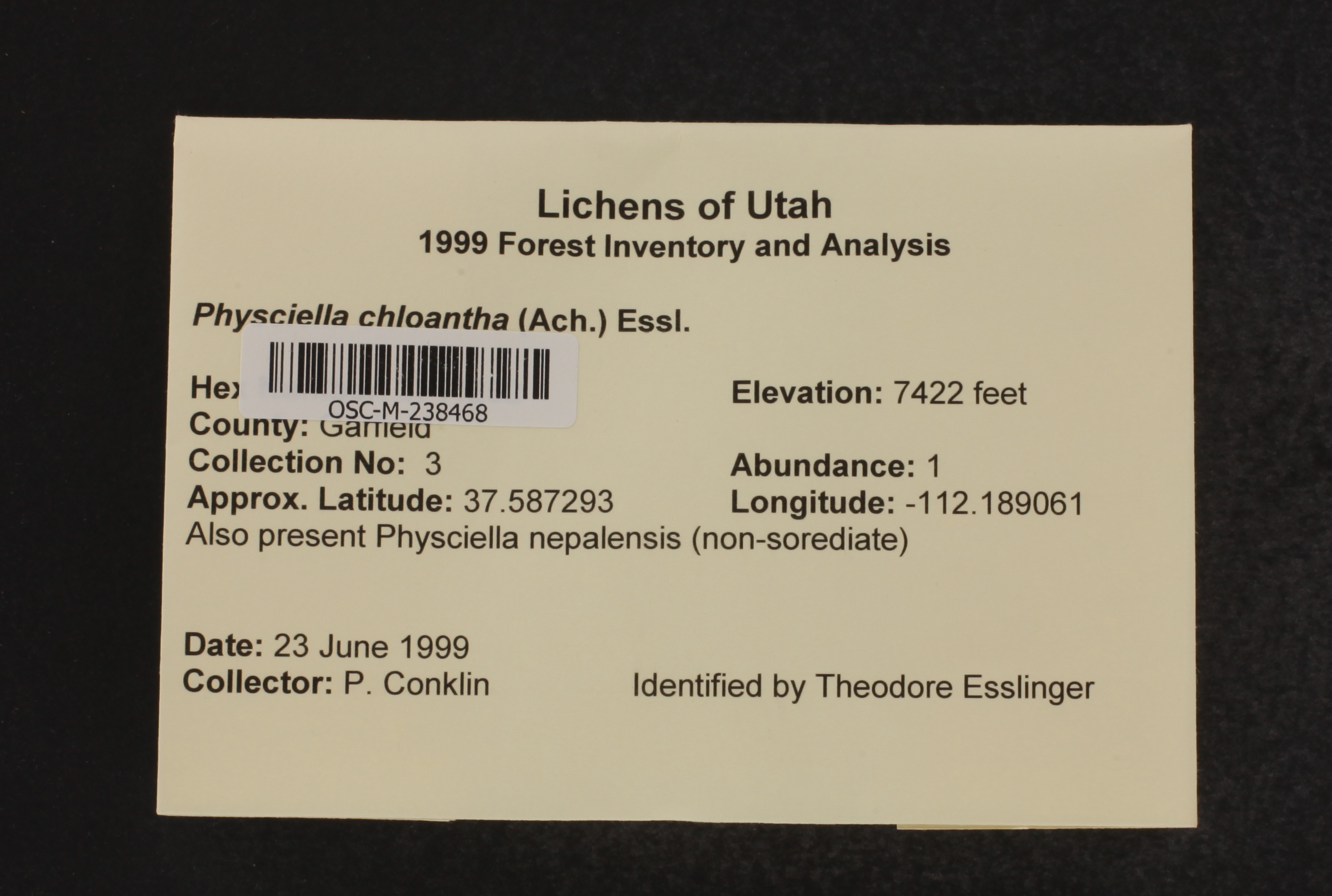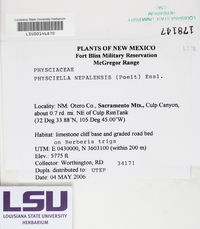
Consortium of Lichen Herbaria
- building a Global Consortium of Bryophytes and Lichens as keystones of cryptobiotic communities -
- Home
- Search
- Images
- Species Checklists
- US States: O-Z >
- US National Parks
- Central America
- South America
- US National Parks
- Southern Subpolar Region
|
|
|
|
Family: Physciaceae
[Phaeophyscia nepalensis (Poelt) D.D. Awasthi, morePhyscia nepalensis Poelt] |
Nash, T.H., Ryan, B.D., Gries, C., Bungartz, F., (eds.) 2004. Lichen Flora of the Greater Sonoran Desert Region. Vol 2. Thallus: foliose, up to 4.5 cm in diam., irregular to more often orbicular lobes: elongate and discrete to somewhat irregularly rounded and partly imbricate, 0.4-1.5 mm broad, +flat, prostrate upper surface: gray to gray-brown or brown, epruinose, sometimes developing +continuous, gray, epinecral layer, especially in older parts; without soredia or isidia but sometimes developing irregular lobules or tubercles centrally in old specimens upper cortex: paraplectenchymatous medulla: white lower cortex: paraplectenchymatous lower surface: black, sometimes paler at the lobe ends, dull to weakly shiny; rhizines: simple, black Apothecia: frequent and usually present, up to 2.5 mm in diam., sessile; margin: entire or becoming irregularly crenate or lobulate in older ones, usually with a corona of rhizines ascospores: brown, 1-septate, ellipsoid, 17.5-24 x 7-10 µm, Physcia-type Spot tests: cortex and medulla all spot tests negative Secondary products: none detected. Substrate and ecology: usually on bark, occasional on rock World distribution: North America and Eurasia. Sonoran distribution: Arizonan and Sonoran mountains at 1400-3000 m. Notes: The only fertile species likely to be confused with Physciella nepalensis is Phaeophyscia sonorae, which also has a pale lower surface, but is easily distinguished by its paraplectenchymatous lower cortex. Moberg (1995) has discounted spore type as a character and has synonymized this taxon with Physciella denigrata (Hue) Essl. |
Powered by Symbiota


































